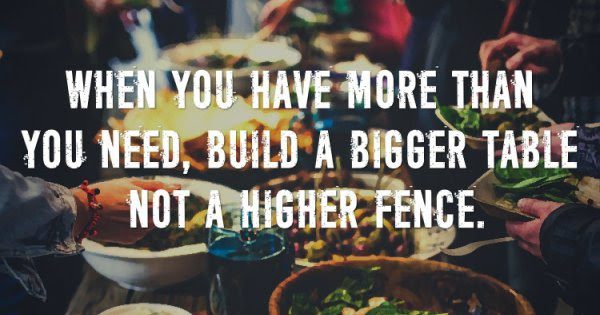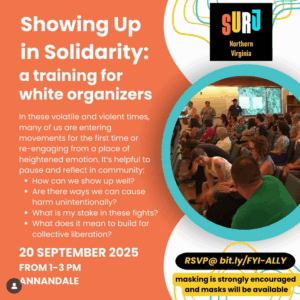If you are a white person with wealth, it is important to redistribute that wealth whenever and however you can. One of the most effective actions you can take is to give money directly to those most harmed by racism and capitalism. For years, organizers of color have coordinated direct giving and fundraising initiatives through social media and other online channels; now more than ever, white folks need to mobilize in support of these efforts. By giving directly to mutual aid funds–and asking your networks to give as well–you can ensure that resources are delivered quickly to communities in need.Though white supremacy culture conditions us to hoard wealth and avoid asking others for money, we need to push past our discomfort in order to shift as many resources as possible. That means we should be giving directly as often as we can, but we should also be asking our friends and families to give. And we can do so from our own homes using the internet and social media. To get started, try these methods for effective online fundraising:
- Leverage your social media reach, but be strategic about it. Use Facebook, Twitter, and other social media platforms to ask for donations. But rather than simply sharing a PayPal or GoFundMe link without context, make sure you explain what you’re fundraising for and why it’s so important to give directly. You can also try the following strategies to get more donations:
- Tag friends — People are often more likely to give if called upon individually.
- Ask for reactions — On Facebook, posts that receive “Love” or “Wow” reactions often appear more frequently in others’ news feeds. Even if your friends can’t give, they can help boost your fundraiser’s visibility by reacting to your post.
- Collect money through your own PayPal or Venmo, then forward to the organizers. — Sometimes, your contacts may prefer to send money directly to you, the person they know. If you use this strategy, it’s especially important that you provide enough context in your post and are transparent about where you’ll be sending donations. And for accountability purposes, it’s a good idea to post screenshots of any forwarding transaction; you can do so in a comment on or reply to your original post.
- Cultivate individual relationships. Think about the people in your networks who might be most likely to give, and connect with them on an individual level–through direct message, email, or even over the phone. Many people you know may be wondering how they can help, and initiating conversations with these folks can provide them a path for taking action. Plus, one-on-one conversations are more personal than social media posts, and may therefore result in more donations.
- Don’t give up! Successful fundraising looks different for everyone. What works for one person may not work for another, and your network’s responses will vary from ask to ask. Even if you don’t get the response you want at first, keep trying! Re-share your post, tag more people, or follow up with that friend who seems interested but hasn’t yet given. You never know when someone will step up.
The more we fundraise, the more resources get to where they are most needed.




